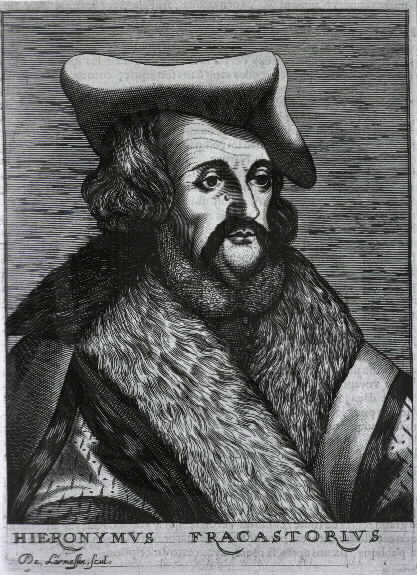<Back to Index>
- Mathematician August Leopold Crelle, 1780
- Scholar and Poet Girolamo Fracastoro, 1478
- 1st President of the Republic of Poland Gabriel Narutowicz, 1865
PAGE SPONSOR

Girolamo Fracastoro (1478 – March 17, 1553) was an Italian physician, scholar (in mathematics, geography and astronomy), poet and atomist.
Born of an ancient family in Verona, and educated at Padua where at 19 he was appointed professor at the University. On account of his eminence in the practice of medicine, he was elected physician of the Council of Trent. A bronze statue was erected in his honor by the citizens of Padua, while his native city commemorated their great compatriot by a marble statue. He lived and practised in his hometown. In 1546 he proposed that epidemic diseases are caused by transferable tiny particles or "spores" that could transmit infection by direct or indirect contact or even without contact over long distances. In his writing, the "spores" of disease may refer to chemicals rather than to any living entities.
"I call fomites [from the Latin fomes, meaning "tinder"] such things as clothes, linen, etc., which although not themselves corrupt, can nevertheless foster the essential seeds of the contagion and thus cause infection."
His theory remained influential for nearly three centuries, before being displaced by germ theory.
The name for syphilis is derived from Fracastoro's 1530 epic poem in three books, Syphilis sive morbus gallicus ("Syphilis or The French Disease"), about a shepherd boy named Syphilus who insulted the sun god of Haiti and was punished by that god with a horrible disease. The poem suggests using mercury and "guaiaco" as a cure. His 1546 book (De contagione -- "On Contagion") also gave the first description for typhus. The collected works of Fracastoro appeared for the first time in 1555.
A marble portrait statue of Girolamo Fracastoro by the Carrarese sculptor Danese Cattaneo (completed 1559) stands on a beautiful arch in the central Piazza dei Signori of Verona, near the monument to Dante Alighieri. On its base is the inscription: "HIER FRACASTORIO \ PAULLI PHILIPPI F \ EX PUBLICA AUCTORITATE \ DICATA \ AN SAL MDLIX". According to a popular legend the stone ball Fracastoro holds in his right hand, symbolizing the world, will fall on the first honorable person to walk under the arch. Over the centuries many people have passed every day under the arch but the ball remains in place.